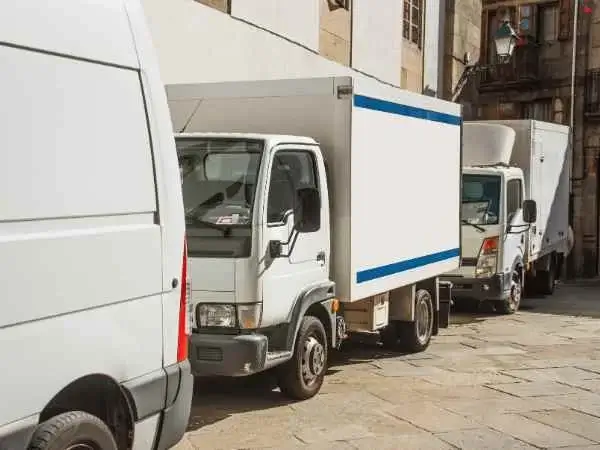
When it comes to e-commerce, last-mile delivery is an important aspect, especially when we consider that customer preferences have lately shifted to online shopping. Though UAE is a fully developed country with large space for innovation, it too faces last-mile delivery challenges. In this post, we will discuss these obstacles in detail and discuss strategies for overcoming them.
Understanding and Tackling the Last-Mile Delivery Challenges in the UAE
1. The Expenses Incurred During Operations
If you are having a product shipped through online shopping and paying around 30 Dhs as shipping costs, around 40% to 50% of that 30 Dhs is spent on last mile delivery. This is quite a financial hurdle for companies, especially when they are looking for competitive advantages. This is why companies in the UAE are trying to bring forward tech-driven solutions that have route optimization that could be more cost effective. Well, there are companies like Porter UAE that use route optimization to boost productivity and make faster deliveries. You could check it out.
2. The Changing Demand
The changing demand could lead to trouble with last mile delivery. For instance, sometimes demand could skyrocket, and sometimes fall quite low – and this happens when the companies do not have the right insights. A sudden shoot up in demand could cause harder last mile delivery than thought, right? Well, a solution is companies could adapt to better analytical insight tools for more accurate results of how the demand is going to be in the next couple of days.
3. Cash Payment Norms
Cash payment options are still in a developing stage in the UAE. This means a courier company needs to agree on cash on delivery, or other modes of payments that the customer is comfortable with – this also poses a hurdle to courier companies. Securing a delivery becomes hard when it is the client’s preferred payment mode.
4. The Customer’s Expectations and Unforeseen Delays
Last mile delivery delays are faced by the customer – which means if delays happen here it reaches the customer late. However hard logistics and courier companies try to avoid this delay, there are some unforeseen instances where it cannot be avoided. The digital era can put a stop to the customer’s anticipation through live tracking tools, and applications. These tools will alert the customer beforehand if there is ever going to be a delay.
5. Competitive Landscape
The companies that are situated in popular hubs like Dubai, and Abu Dhabi could go through a high amount of competition. The competition could be intense and the best way a company could gain a competitive advantage would be through successful last mile deliveries. However, if a company wants to overcome this competition, implementation of new technology, and adaptation of better packaging is essential.
6. Drone Delivery and Autonomous Vehicles
The UAE has been a pioneer in adopting technology, and the test runs and trials of cutting-edge innovations such as drone delivery and autonomous vehicles have been among its achievements. Deciding on the use of advanced infrastructure and regulatory frameworks, companies are now seeking to make use of drones as a way of bypassing traffic congestion and reaching remote areas in a timely manner. Furthermore, autonomous vehicles will improve efficiency and decrease the carbon footprint in the urban logistics of the UAE, smoothly operating on the country’s busy roads.
7. Micro-Fulfillment Centers
Micro-fulfillment centres (MFCs) are a key element of urban logistics enabling last-mile delivery to be optimised in the UAE. Such a type of warehouses are small in size and are placed strategically within the cities to facilitate quicker and cheaper deliveries. Autonomous sorting and packaging units are also contributing to the efficiency, thus facilitating rapid order processing and dispatch without adding more distance to delivery vehicles.
8. Urban Mobility Integration
The last-mile delivery integration with the present urban mobility system is one of the key issues in the UAE. The companies that provide delivery services do this by using their wide network of public transportation and shared mobility options to optimise the routes and ultimately reduce delivery times. The partnerships with ride-hailing services open up additional earnings sources to drivers and increase delivery service speed.
9. Customer-Centric Solutions
Ensuring a seamless delivery is still the main focus of the UAE-based companies. In-real-time tracking, delivery notifications, and flexible delivery options are in place to meet the customers’ preferences, which ultimately improves their satisfaction and loyalty to the business. Instant delivery services in Dubai or anywhere across the UAE and the subscription-based model are some of the key factors that lead to a personalised experience, which in return builds repeat business and good word-of-mouth for the company.
Conclusion
As the UAE charts its course through the maze of last-mile delivery challenges, it’s not just finding solutions—it’s leading the pack. From futuristic tech like drones to customer-centric innovations, the UAE is rewriting the rules of delivery. With every mile, it’s not just delivering parcels; it’s delivering on the promise of tomorrow’s logistics.











